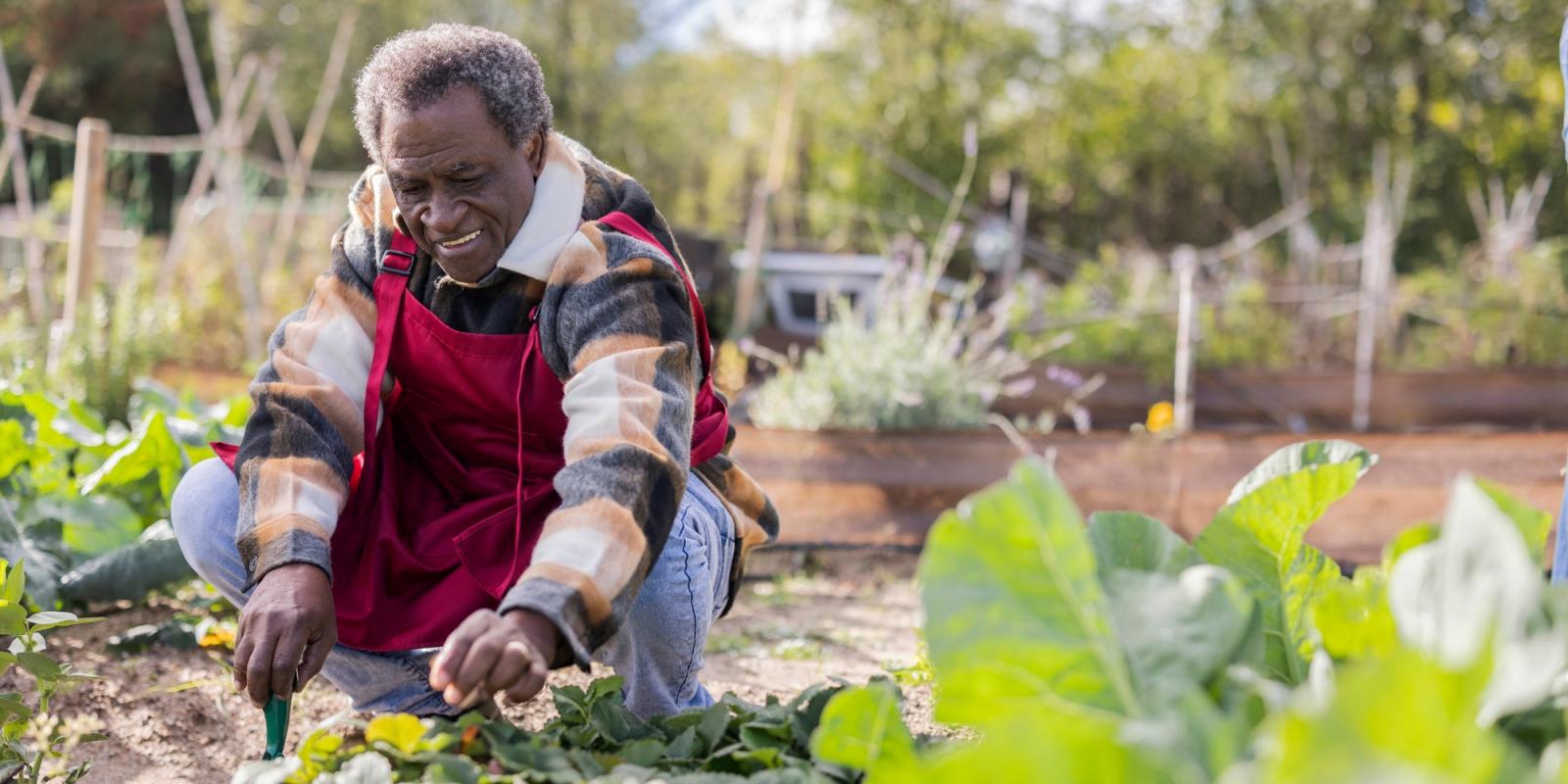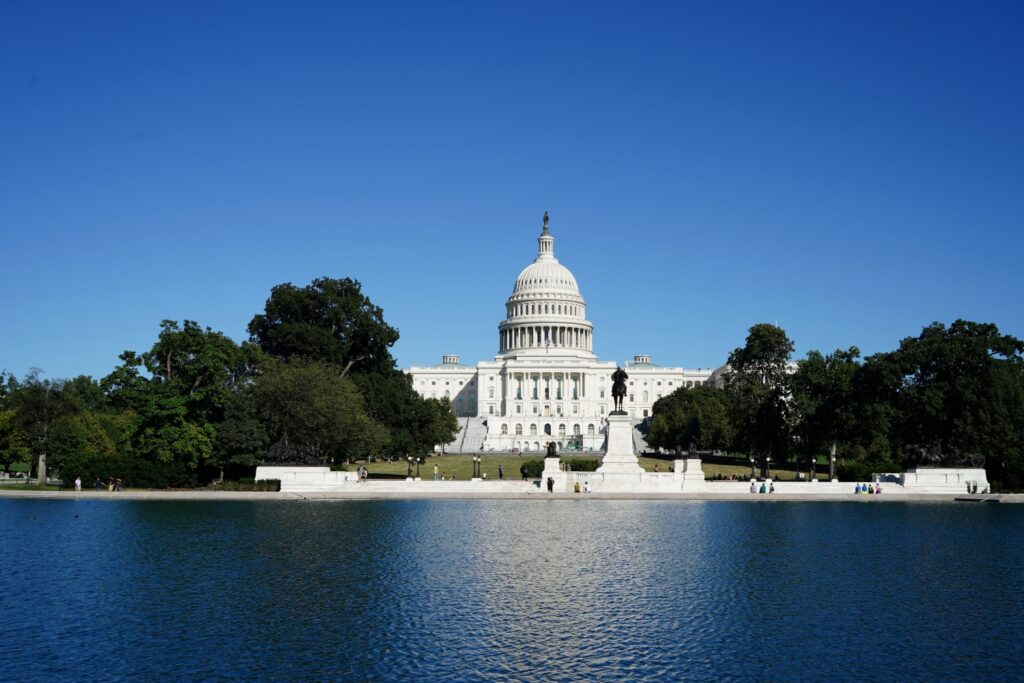Abstract
Rural America, home to more than 20% of the older adult population, faces distinct challenges in supporting healthy aging. Despite these challenges, age-friendly initiatives have not been fully prioritized in rural communities. The National Rural Age-Friendly Initiative, led by the National Rural Health Association in partnership with The John A. Hartford Foundation, aims to strengthen age-friendly care through an age-friendly ecosystem by promoting collaboration across sectors and integrating community health approaches. These approaches ensure supportive environments that enable older adults in rural areas to age in place with dignity, health, and social connection.
Key Words
rural aging, rural health, rural healthcare, aging in place, age-friendly ecosystem, integrated care, collaborative care, multi-sector engagement, community health.
Twenty percent of the rural population in the United States is ages 65 or older and the majority of those rural older adults would like to age in place (Henning-Smith et al., 2021). Aging in place means older adults can live in their own homes or communities safely, independently, and comfortably, regardless of age, income, or ability. It involves making adaptations to the home environment while being able to access support services and resources as needed to maintain a high quality of life (AgeInPlace.com, 2023).
For many older adults in rural areas, a population that is growing in size and needs, the ability to age in place can be positively or negatively impacted by their location. These communities have diverse, heterogeneous attributes, including strengths that can be leveraged to improve care for rural older adults. But rural America faces a unique combination of factors that create disparities in healthcare not found in urban areas (Tuttle et al., 2020). Economic factors such as high rates of poverty, limited educational and employment opportunities, lower household incomes, cultural and social differences, lack of recognition by policymakers, and the isolation of living in remote regions conspire to impede rural Americans in their struggle to lead healthy lives. The burden of these disparities falls heavily on rural older adults. Large geographic distances and underinsurance compound older adults’ ability to maintain their health as they age. Rural hospital closures, shortages of healthcare professionals, and caregiver challenges hinder access to necessary care, screenings, or chronic disease management.
Research highlights that key risk factors such as transportation barriers, injuries, social isolation, and food insecurity significantly contribute to poorer health outcomes for rural older adults as they are less able to access healthcare, maintain a healthy diet, or stay socially engaged (Jacobsen et al. 2024). Long travel distances create barriers to accessing care and participating in community-related activities, which subsequently leads to social isolation and increased risk for worsened health outcomes for older adults.
A study by Jacobson et al. (2024) revealed that nearly 30% of rural (29.6%) and urban (28.5%) older adults reported experiencing at least one of the selected risk factors: injury, food insecurity, or lack of social and emotional support. But social isolation is a more prominent issue in rural areas, where the population is dispersed and older adults can live far from neighbors, family members, or community centers, leaving them with fewer opportunities for social interaction. The closure of local hubs, such as churches and community centers, has exacerbated this problem.
According to Jacobson et al. (2024), lack of social and emotional support is the most common of the risk factors, reported by more than 18% of older adults from both rural (18.5%) and urban (19.9%) areas, which heightens the risks of loneliness, depression, and associated health deterioration. But the context in which this lack of social and emotional support occurs in rural communities differs significantly from urban areas, with rural older adults facing much greater geographic isolation.
Food insecurity also affects many older adults in rural communities. Rural areas often have fewer grocery stores, and those that exist are mostly far from where older adults live. Food insecurity is prevalent, with 4.9% of rural older adults experiencing difficulties in accessing nutritious and affordable food, compared to 4.4% in urban areas (Jacobson et al., 2024). Such minor statistical gaps often represent greater disparities in access and outcomes in rural communities, especially when considering sample sizes. Aside from the scarcity of grocery stores in rural communities, economic challenges and transportation barriers make maintaining a healthy diet difficult, leading to increased rates of malnutrition and chronic diseases.
‘More than a third (35%) of State Offices of Rural Health cite transportation as the largest barrier to successful aging in place.’
Transportation is a critical challenge, as older adults in rural areas often face long travel distances to access healthcare services. More than a third (35%) of State Offices of Rural Health (SORH) cite transportation as the largest barrier to successful aging in place (Lahr & Henning-Smith, 2021). Also, all SORHs strongly agreed (81%) or agreed (19%) that transportation was a barrier to aging in place for rural older adults. Limited or nonexistent public transportation further compounds this issue, making it difficult for rural older adults, especially those who no longer drive, to attend medical appointments or participate in community activities. This contributes to delays in receiving preventive care and managing chronic conditions.
These challenges and concerns highlight the need for tailored policies and interventions that account for the geographic, social, and economic nuances of rural living and the impact these factors have on rural older adults’ ability to age in place. But it can be difficult to find solutions that address these needs through a localized, innovative, and coordinated approach (Henning-Smith, et al., 2021). This is in part due to the fragmentation of municipalities and governmental jurisdictions, which can fall under the auspices of village, town, city, county, state, and federal regulations. This fragmentation makes the development and long-term sustainability of age-friendly initiatives more difficult (Russell et al., 2021). However, the age-friendly ecosystem provides a guide to addressing these issues by creating a space where partners from across the age-friendly sectors and initiatives can collaborate.
In the remainder of this article, we will discuss a partnership between the National Rural Health Association (NRHA) and The John A. Hartford Foundation (JAHF) that sought to bring all sectors of rural health systems together to address including age-friendly practices in rural communities with a multi-sector approach.
National Rural Age-Friendly Initiative
In January 2023, in partnership with JAHF, the NRHA established the National Rural Age-Friendly Initiative (NRAFI) to address increasing inequalities in rural age-friendly care and the need for multisector collaboration. Numerous individual rural health stakeholders and advocates had attempted to address these challenges through research, collaborations, educational sessions, and community outreach at the state, regional, and federal levels. But there was not one initiative focused on combining these components under one umbrella until JAHF funded NRAFI as an 18-month planning grant.
The NRHA is a national nonprofit dedicated to improving healthcare access and health equity in rural communities. NRHA has a diverse membership of more than 21,000, including healthcare providers, researchers, policymakers, rural health professionals, advocates, and students. Focused on policy advocacy, education, and research, the NRHA serves as the central platform for rural health professionals and leverages its extensive expertise and resources to drive initiatives addressing the healthcare challenges faced by rural communities.
This organizational strength positions NRHA to make a substantial impact on rural aging through the NRAFI. The NRAFI strengthens age-friendly care policies and programs for older adults in rural communities through Convenings, Communications, Educational Activities, and Community Health Worker (CHW) trainings. These methods intersect with the age-friendly ecosystem sectors that encompass the lived environment, social determinants of health, the healthcare system, and a prevention-focused public health system (Fulmer et al., 2020 ).
The planning phase of the initiative concentrated on developing the National Rural Age-Friendly Interest Group, a group of subject matter experts in aging and rural health. This group disseminates rural age-friendly information and best practices among NRHA’s 21,000 or more members, integrates dedicated rural age-friendly health tracks within conferences, and provides technical assistance to five selected State Rural Health Associations—nonprofit grassroots organizations committed to improving the health and well-being of rural residents in their state.
‘NRHA has trained more than 2,100 community health workers and implemented 30 training courses.’
Through these avenues, the Initiative has been essential in translating age-friendly principles into practical solutions for rural America by developing resources, partnerships, and strategies to build age-friendly care across rural communities. The main emphasis of the Initiative stresses the importance of a multisector approach integrating health systems, social services, and community support to ensure age-friendly care in rural communities. These points of emphasis are reflected in the September 2023 policy and programmatic priorities from the Initiative’s interest group: 1) Promoting the “Choosing Rural” concept, a campaign to change the narrative from older adults “being stuck” in rural areas to older adults “choosing to live” in rural areas; 2) System alignment of multisector plans on aging and state and federal frameworks and resources for the rural end user; 3) Addressing regulatory barriers at state and federal levels; and 4) Building a robust care workforce to support rural aging in place. Each of these priorities has ties to at least one age-friendly ecosystem sector. Additionally, NRHA provided members and partners with a Rural Age-Friendly Integration Resource that outlines how age-friendly practices and resources can benefit different rural populations represented in its membership. It is broken down to provide ideas that align with the various age-friendly ecosystem sectors. The integration resource also provides links to NRHA’s age-friendly partners, which are five of the six sectors of the age-friendly eco-system.
The NRAFI also looks to amplify another key way the age-friendly ecosystem integration is taking shape—through the work of community health workers (CHWs). In rural communities, CHWs can play a significant role connecting people with healthcare services, helping them manage chronic conditions, and providing support for navigating the complexities of the healthcare system. NRHA in 2012 launched the Rural Community Health Worker Training Network to address healthcare access challenges along the U.S.-Mexico border. The network now spans the U.S.-Mexico border, along with partnerships across various regions of the United States. NRHA has trained more than 2,100 community health workers and implemented 30 training courses in chronic disease management, oral health, older adults, COVID-19, cancer support, and other topics.
The program’s success shows the importance of empowering healthcare workers in rural communities and the role of cultural competence in enhancing health outcomes.
But, until the partnership with JAHF, NRHA had not provided CHW training focused on older adults as whole individuals, not just their condition. The NRAFI created a rural older adult-focused CHW training, now certified in the state of Texas, as a central activity of the Initiative. This training integrates the 4Ms Framework developed by the Institute for Healthcare Improvement in partnership with JAHF, the American Hospital Association, and the Catholic Health Association of the United States.
These organizations collaborated to promote the 4Ms, including “What Matters, Medication, Mentation, and Mobility,” as core elements of high-quality care for older adults. For this CHW training, the NRAFI team partnered with the Institute for Healthcare Improvement to use its existing materials and expertise to equip CHWs with skills to deliver age-friendly care in rural settings. In collaboration with the University of Texas at Arlington, NRHA developed a bilingual English and Spanish curriculum to train rural CHW on the 4Ms, including how to discuss them with their clients.
This promotion resulted in 63 age-friendly CHWs being trained in El Paso, Texas, as of April 2024, and more than 40 more CHWs from the Dallas-Fort Worth, Texas, area were trained virtually in June 2024. In July 2024, JAHF approved the implementation phase of the NRAFI, which included plans to expand this training in a larger pilot to additional states over the 3-year phase. The CHW training component of the Initiative is expanding in the implementation phase to include support for the American Heart Association’s HeartCorps training on older adults and Oregon Health and Science University to provide training in its Connected Care for Older Adults model. With this model CHWs use protocols based on the 4Ms in collaboration with clients’ primary care provider.
Additionally, the NRAFI recognizes that collaboration across sectors is critical to building an age-friendly ecosystem, particularly in rural settings with scarce resources and complex needs. Through the NRAFI, NRHA can convene leaders from across sectors to discuss what an age-friendly practice could or does look like in their rural focus area and how collaborations can occur. Through the NRAFI Resource Hub, NRHA can connect members and partners with outstanding resources, guides, educational content, and more from interest group members and other leaders in related fields.
This includes highlighting the incredible work of Meals on Wheels America and their rural-focused projects. It includes the effective work of Lutheran Services in America’s Rural Aging Action Network. NRHA (2024) also published the Compendium of Best Practices for Rural Age-Friendly Care. It includes submissions focused on care coordination, caregiver support and resources, mental health and behavioral health, and more. Through the NRAFI, NRHA and interest group members and partners will continue to share, create, and expand resources, policy work, and collaboration around older adult priorities.
Recognizing and Building Upon the Age-Friendly Ecosystem in Rural Areas
The successful creation of a rural age-friendly ecosystem centers the collaborative efforts of multisector partners committed to advancing coordinated care for older adults, based on available partners who fill those roles in rural communities. NRHA, through its programs, particularly the NRAFI, demonstrates the power of partnership in addressing the unique needs of rural aging populations. Through collaboration with organizations such as the JAHF, Institute for Healthcare Improvement, Trust for America’s Health, universities, state associations, local agencies, community organizations, and interest group members who drive the age-friendly movement, NRHA has championed the integration of age-friendly principles into healthcare, public health, and community services to holistically ensure a rural age-friendly ecosystem.
Despite these efforts, challenges still need to be addressed, including funding constraints, workforce shortages, geographic isolation, and food insecurity, which require sustained commitment and innovative solutions. NRHA, JAHF, and its partners are advocating for policies that prioritize age-friendly care, expand training for CHWs, and encourage a more integrated approach to aging services that makes the age-friendly ecosystem and care not just an ideal but a reality.
By promoting a comprehensive and interconnected approach, the NRAFI not only strengthens healthcare delivery but also enhances the quality of life for rural older adults and ensures they can age with dignity and autonomy in their communities.
Rebecca Yeboah, MDP, is Program Services coordinator, Laura B. Hudson, MPA, is senior director of Program Services and Contracting, and K. Piper Martin, MPH, is Program Services manager, all at the National Rural Health Association.
Photo credit: Aida Lopez Jimenez
Funding/Support:
The National Rural Age-Friendly Initiative, within the National Rural Health Association’s Center for Rural Public and Population Health, is funded by The John A. Hartford Foundation.
Additional Resources
Aging: Rural Health Research topic. (2022, January 18). https://www.ruralhealthresearch.org/topics/aging
Connected Care for Older Adults. (n.d.). About connected care for older adults. https://connectedcareforolderadults.org/
Helping older adults age well in rural America. (2023). www.commonwealthfund.org. https://doi.org/10.26099/tkph-e882
Lutheran Services in America. (2024, August 27). Older adults—Lutheran services in America. https://lutheranservices.org/older-adults/
National Rural Health Association. (n.d.). NRHA Home | National Rural Health Association. https://www.ruralhealth.us/
National Rural Health Association. (n.d.). National Rural Age-Friendly Initiative Resource Hub. https://www.ruralhealth.us/programs/center-for-rural-public-population-health/national-rural-age-friendly-initiative
National Rural Health Association. (n.d.). Rural Community Health Worker Training Academy. https://www.ruralhealth.us/programs/center-for-rural-health-equity-and-innovation/rural-community-health-worker-training-academy
National Rural Health Association. (n.d.). Rural Age-Friendly Integration Resource. https://www.ruralhealth.us/programs/center-for-rural-public-population-health/national-rural-age-friendly-initiative/rural-age-friendly-integration-resource
The John A. Hartford Foundation | Improving care for Older Adults. (n.d.). The John A. Hartford Foundation. https://www.johnahartford.org/
References
AgeInPlace.com. (2023, May 5). What is aging in place?—Age in place definition. https://ageinplace.com/aging-in-place-basics/what-is-aging-in-place/
Fulmer, T., Patel, P., Levy, N., Mate, K., Berman, A., Pelton, L., Beard, J., Kalache, A., & Auerbach, J. (2020). Moving toward a global age‐friendly ecosystem. Journal of the American Geriatrics Society, 68(9), 1936-1940. https://doi.org/10.1111/jgs.16675
Henning-Smith, C., Mulcahy, J., Lahr, M., Tanem, J. (2021). Preferences for long-term care arrangements among rural and urban older adults [Policy brief]. University of Minnesota Rural Health Research Center. https://rhrc.umn.edu/wp-content/uploads/2021/05/UMN-Aging-in-Place-Policy-Brief_5.1.21.pdf
Jacobson, I., Swendener, A., Lahr, M., Fritz, A., & Henning-Smith, C. (2024). Risk factors for poor health among U.S. older adults in rural and urban areas: Injury, food insecurity, and lack of social and emotional support [Policy brief]. University of Minnesota Rural Health Research Center. https://rhrc.umn.edu/wp-content/uploads/2024/06/Risk-factors_elder-abuse-PB_6.3-1.pdf
Lahr, M. & Henning-Smith, C. (2021). Barriers to aging in place in rural communities: Perspectives from state offices of rural health. [Policy brief]. University of Minnesota Rural Health Research Center. https://rhrc.umn.edu/wp-content/uploads/2021/11/UMN_BarriersToAgingInPlace_6.pdf
National Rural Health Association. (2024). Compendium of best practices for rural age-friendly care. https://www.ruralhealth.us/getmedia/061dcfa7-c101-437a-95b4-366dee62526d/2024-NRHA-Compendium-of-Best-Practices-for-Rural-Age-Friendly-Care.pdf
Russell, E., Skinner, M.W., & Colibaba, A. (2021). Developing rural insights for building age-friendly communities. Journal of Rural Studies, 81, 336-344. https://doi.org/10.1016/j.jrurstud.2020.10.053
Tuttle, C., Tanem, J., Lahr, M., Schroeder, J., Tuttle, M., & Henning-Smith, C. (2020). Rural-urban differences among older adults. University of Minnesota Rural Health Research Center. https://rhrc.umn.edu/wp-content/uploads/2020/09/Rural-Urban-Older-Adults_Chartbook_Final_8.25.20.pdf













